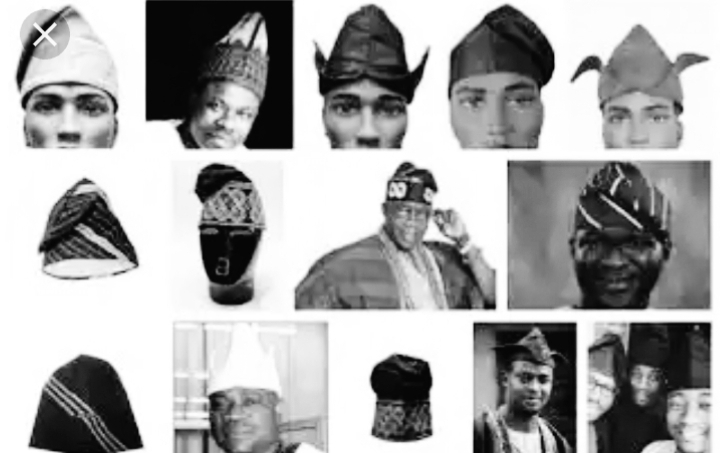The real meaning of the different positions of a Yoruba man’s cap (filà)
A Yoruba man’s cap can be tilted right, left,front, up, or back, but what does it all mean?
There have been many misconceptions about the meaning of the caps (Fila) worn by Yoruba men. A Yoruba scholar on Instagram, Abdulquddus Gbadamosi, shed some light on this.
The shape of the man’s head is said to resemble the “circle of life,” which begins on the right and travels across the front, left, and rear.
When a young boy is dressed up for a special event, his mother tilts his cap to the right because, when one is young, it is a sign that one is just starting out in life.
The second stage in a man’s life is when he is a young man in his prime. His cap would be tilted toward the front.
In Yoruba culture, it is a tradition for men of this age to marry, prosper financially, nurture their children, and support their families. These milestones are highly valued and regarded as pivotal obligations for men at this stage of life.
Elders.
The left tilt is for the older men; at this age, one gradually retires from work and enjoys life more and the fruits of his labour.
Aged men.
The truly old men wear their caps back to show the end of life and the fact that they have lived life.
Lowly men
The standing cap was called an Aro. It literally means standing, and it has no position or means nothing per se. This wasn’t a popular way to wear a cap in Yoruba culture and would only be seen by carefree or inferior members of society.
Sango worshippers also wear the standing cap or Aro.
Married and single.
The front and back tilting of the cap is not so common these days; what we have are the left and right tilts.
The prevalent belief is that married men wear their caps to the left, while single men wear theirs to the right. Some people might argue this is not so, as the cap is merely to reveal their age and social level.
Kings and royalty.
When kings, princes, or other people in positions of authority wear their caps to the right or left in Yoruba land, their followers are expected to wear theirs in the opposite direction out of respect.
A groom.
To discourage potential suitors, a prospective groom must always wear his cap facing toward the direction of his future spouse’s home while in the vicinity.
